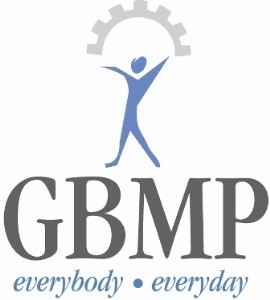AccuRounds & Dacon Construction: 3P event gets everybody on the same page regarding new building layout.
3P is one of the most transformative manufacturing tools. Other lean methods take a production process as a given and seek to make improvements. The Production Preparation Process focuses on eliminating waste through product and process design. Dacon Corporation, a Natick Massachusetts design and construction management firm, and AccuRounds, a contract manufacturer of precision turned components, worked together to envision and document potential layouts for a proposed new building at AccuRounds’ Avon, MA site. Coached by Bob Elliott, a GBMP Continuous Improvement Manager, the cross functional/cross company team from AccuRounds and Dacon used 3P principles, to inform and test layout assumptions and ideas. The goal of the event was to collaborate in the early stages of building planning in order to improve each organization’s project decisions and efforts, with a goal of ultimately designing, engineering and constructing a facility that supports and enables the lean enterprise model that AccuRounds follows. This type of concentrated improvement event sets an objective to create a facility that allows for perfectly performing processes from day one of occupancy. It challenges participants to think outside the box in a collaborative way, leveraging lean thinking and tools to develop process and design breakthroughs. The idea is to embrace rapid prototyping to test concepts rather than just reinventing the same space and the same processes within the walls of a new building. First steps included understanding in detail the current processes used to satisfy AccuRounds customers, then envisioning improvements to those processes, and finally “trystorming” (a combination of brainstorming and rapid prototyping) in order to arrive at new layouts that enable the concepts the team came up with. Tools such as “bubble diagrams” and “paper doll layouts” were utilized to support the “trystorming” efforts and participants were encouraged to come up with as many versions of adjacency plans and layouts as possible to stimulate outside the box thinking. AccuRounds President and Owner, Michael Tamasi, said. “Once we started documenting and discussing the details of our business and drawing on the collective knowledge of the Dacon and AccuRounds contributors, I was hooked. I spent the whole two days with the team. We developed several new perspectives and ideas and it was so refreshing to see my employees and the architects working so well together. Everyone was engaged, animated and excited by the potential of what we could achieve for this new building.”
Crane Stationary: Process changes help on-time delivery SOAR
Crane Paper began began producing the paper for all U.S. currency in 1879 and continues to do so today. However, it is through Crane’s stationery products that most people know the Crane name. Items from the Crane Stationery Division have been the product of choice for many distinguished individuals, from Queen Elizabeth II to Franklin and Eleanor Roosevelt. In 2012 Crane’s Stationery Division, located in Dalton Massachusetts, began to apply lean principles and methods to their production processes. “When I joined the division I recognized that we needed to take a serious look at how we were flowing material and information through the plant,” said Mr. Waterman, VP Operations for Crane Stationary. “There was way too much inventory at rest, and not enough undergoing value-added steps. We were very busy, but not necessarily doing things that would move the order closer to shipping.” GBMP Continuous Improvement Manager Pat Wardwell challenged Crane Stationary to employ cross-functional management/employee teams to think in entirely new ways about process flow, plant layout and the best use of resources. Using the principles and methods of the Toyota Production System/Lean Manufacturing as a guide, the team began their journey by delving into the details of customer demand in order to understand the required pace of production, and developed a comprehensive part/process matrix to understand the most frequent flow routes required to fulfill orders. The team was introduced to the concepts of flow and pull production as an alternative to their traditional “push” production, and were challenged to develop compact layouts and visual process indicators that would help them to quickly see when a problem arose. A new layout called for “pulling” each order logically through work cells. Inventory feed areas and kitting operations were established in close proximity to the production cells. Significant changes were made to the flow and visuality of information in order to allow for level loading of cells on a daily basis, and the best sequencing of work for production operators given any equipment constraints. The results speak for themselves. According to Mr. Waterman, “In 2011 the plant was averaging about 30-40% on-time delivery during the holiday season, and that was with scads of overtime. During the 2012 holiday season we averaged greater than 85% on-time delivery and many days we were in the 90%+ range.”
Read these case studies in their entirety on the GBMP website.











